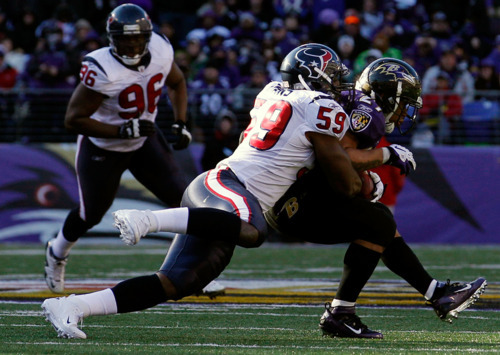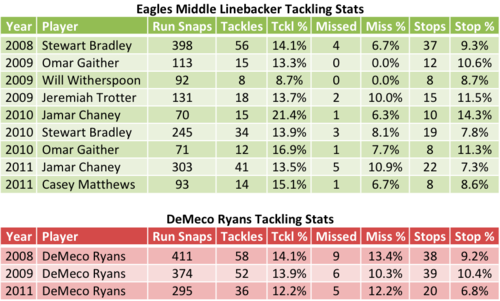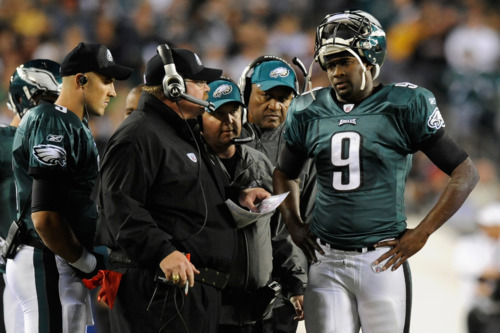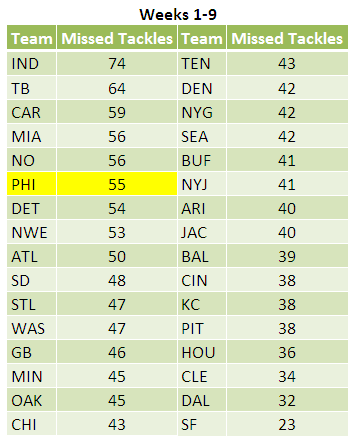John Breitenbach wrote a post on BGN about the underrated abilities of Akeem Jordan. He goes through all the phases of the game with Pro Football Focus stats and includes nice game shots. Here’s his final analysis:
I’m not trying to make Jordan out to be some sort of superstar but it’s a shame he receives such little respect from Eagle fans. He was undrafted (and went to a tiny school) but he’s worked his way to become at the very least a serviceable NFL starter. At just 26, who’s to say he won’t get better? If you’re looking for someone to challenge Kendricks for the strongside spot, pay less attention to Jamar Chaney, and more to #56.
I’m not going to make Breitenbach’s argument into a straw man; it’s a reasonable and measured conclusion. Maybe Jordan is better than we think. However, I think there are three main rebuttal points:
- Jordan isn’t as good in coverage as those numbers illustrate. Breitenbach places Jordan’s coverage stats (09-11) side-by-side with Lance Briggs, and Jordan looks good. Certainly his completion percentage is lower (and therefore better). But, for one thing, Breitenbach doesn’t mention that the sample sizes are quite different. Jordan had only 372 coverage snaps during those three seasons, compared to 607 for Briggs just last year. When you look at targets per coverage snap (i.e. how often he was picked on), Jordan suddenly looks subpar.
- I don’t think there’s much evidence, based on Breitenbach’s numbers, that tackling is one of Jordan’s “greatest strengths.” He missed 9.2% of his tackles from 09-11, which would have been good enough for 20th last year among 4-3 outside linebackers with at least 25% of their team’s snaps. That actually does make him one of the better tacklers on the Eagles LB corps, but that’s not a whole lot to brag about.
- Finally, the most damning evidence against Jordan is simply that he hasn’t been able to hold a starting job—even when his competition has been so bad. Breitenbach mentions the atrocious Ernie Sims. Moise Fokou, Casey Matthews, Jamar Chaney… the list goes on and on of the guys coaches played before Jordan. He got more snaps after Fokou was benched, then placed on injured reserve in the last month of 2011, but that wasn’t a vote of confidence as much as Plan Z.
Jordan is a great special teams player and he’s fine as a backup. But I doubt any good defense considers Akeem for a starting role.




